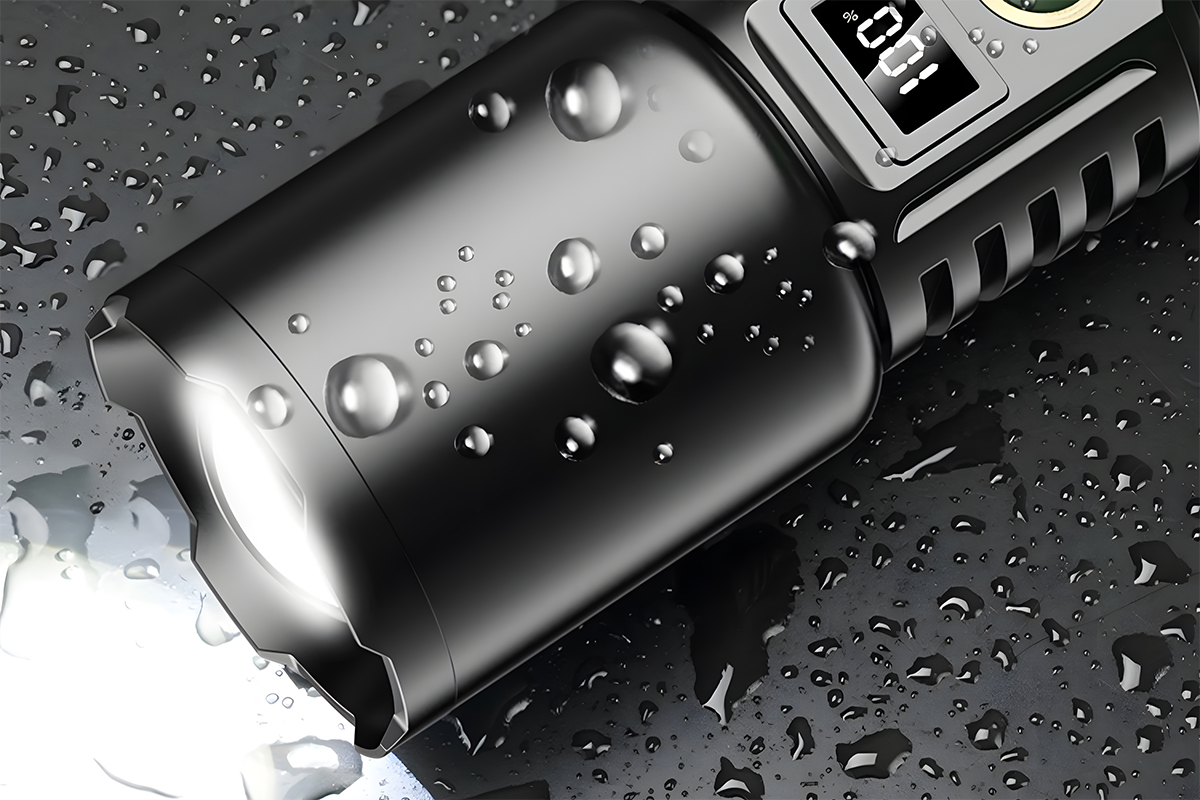
Waterproof flashlights are designed to resist the intrusion of water and function effectively even when submerged or exposed to wet conditions. They are constructed with materials and features that prevent water from entering its internal components. This typically involves sealing the flashlight to create a watertight or water-resistant enclosure. Despite exposure to water, a waterproof flashlight can maintain effective functionality. This includes the ability to generate light, adjust brightness levels (if applicable), and operate various modes or features that the flashlight may offer. In many cases, a waterproof flashlight is capable of being submerged in water for a certain depth and duration without experiencing damage. In addition to being waterproof, many flashlights designed for wet environments incorporate corrosion-resistant materials to withstand exposure to saltwater and other corrosive substances. The adoption of LED technology in waterproof flashlights has led to improvements in efficiency, brightness, durability, and overall performance. These advancements make waterproof LED flashlights highly reliable and versatile tools for outdoor enthusiasts, professionals, and individuals in need of dependable illumination in challenging conditions.
Waterproof flashlights have a sealed construction that prevents water from entering and damaging internal components. They are typically constructed with durable and corrosion-resistant materials, such as aluminum, stainless steel, or high-quality plastics. These materials enhance the flashlight's resistance to the effects of water exposure. The joints, seams, and openings of a waterproof flashlight are sealed to prevent water from entering. This may include sealed switches, O-rings, gaskets, or other protective measures to maintain a watertight seal. The level of water resistance is often specified by an Ingress Protection (IP) rating, indicating the flashlight's ability to withstand water exposure. Common IP ratings include IP65 (splash-resistant), IP67 (submersible up to 1 meter), and IP68 (submersible beyond 1 meter). In certain models designed for water activities, such as boating or kayaking, the flashlight may have a buoyant construction. This ensures that the flashlight can float on the water's surface if accidentally dropped. Many waterproof flashlights are built to be impact-resistant, capable of withstanding drops and rough handling. This feature enhances the flashlight's durability in various outdoor or emergency situations. The switches on waterproof flashlights are often designed for ease of use, even in wet conditions. Textured or oversized buttons make it simple to operate the flashlight with gloved hands or in the dark.
The enormous popularity of waterproof flashlights can be attributed to their practicality in various outdoor scenarios, reliability in emergencies, increased consumer awareness, and advancements in technology that enhance their durability and performance. Waterproof flashlights are highly valued for outdoor activities such as camping, hiking, boating, fishing, and other adventures. The ability to withstand rain, splashes, or accidental submersion enhances their utility in diverse outdoor environments. During emergencies such as storms, floods, or power outages, having a flashlight that remains functional despite exposure to water is crucial. Waterproof flashlights provide a reliable source of illumination in adverse weather conditions. Waterproof flashlights are particularly popular among individuals engaged in marine activities or water sports. Whether used on boats, kayaks, or during underwater excursions, these flashlights are designed to handle exposure to water. Professionals involved in search and rescue operations, as well as first responders, often rely on waterproof flashlights. The ability to function in wet and challenging conditions is essential in these critical situations.






















